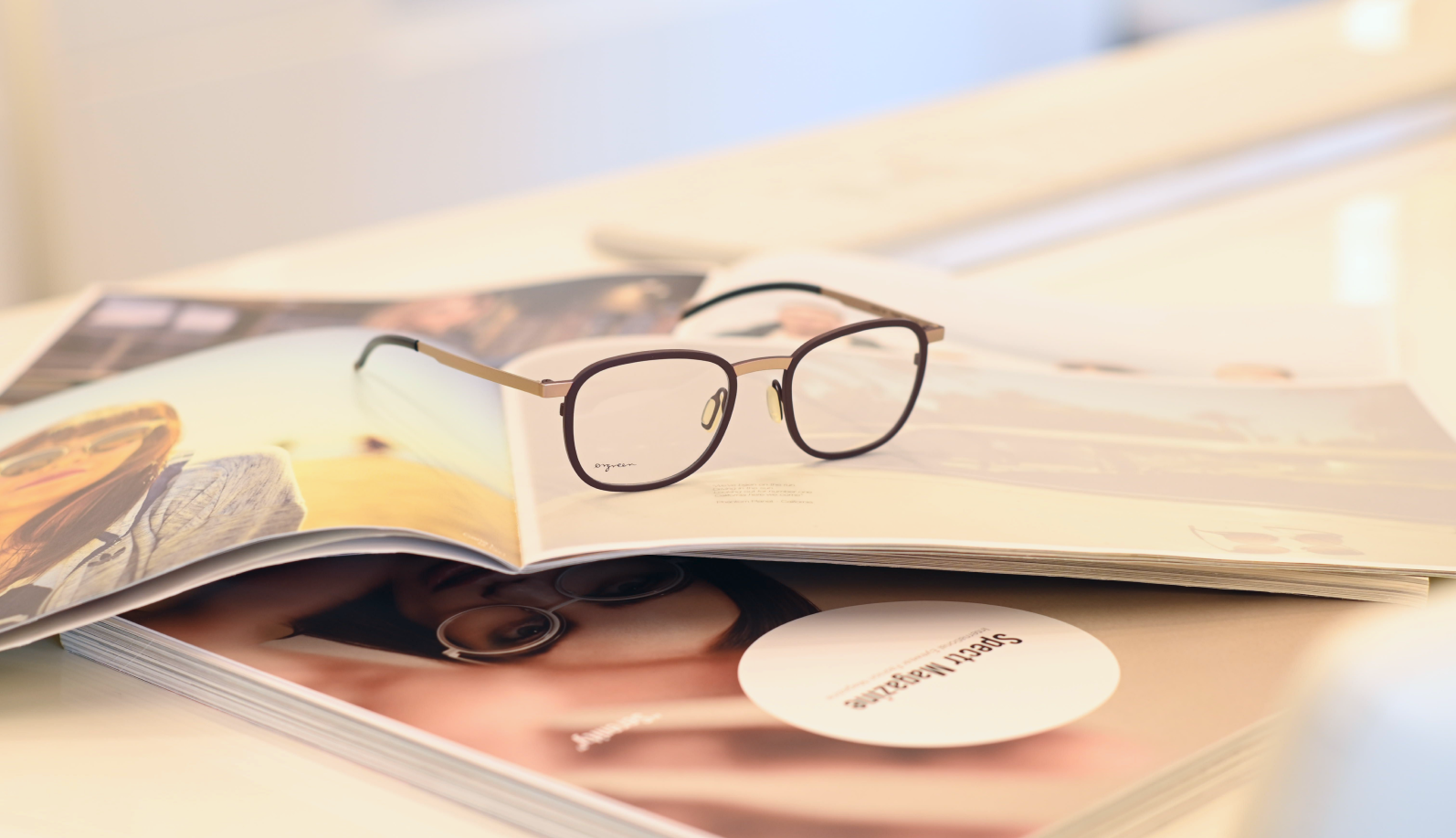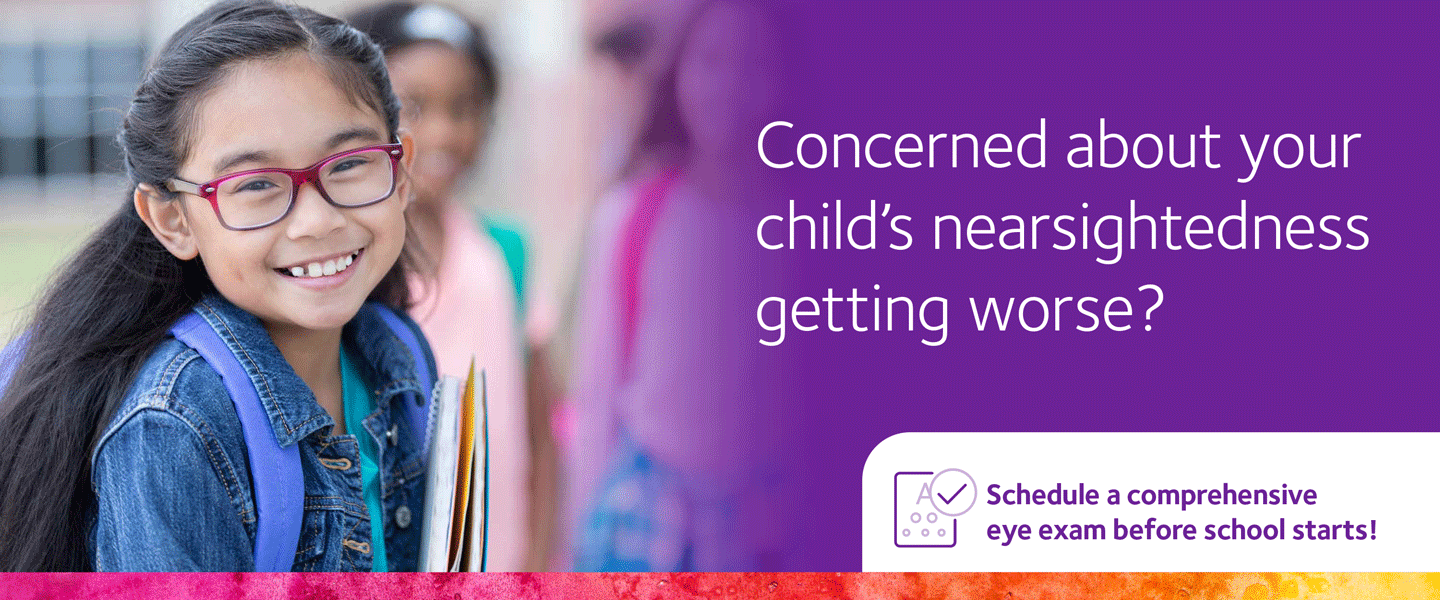What is Myopia?
Myopia, or better known as nearsightedness, is when you need glasses or contact lenses to see clearly at a distance. Onset of myopia typically occurs around 8 years of age and may progress throughout adolescence and young adulthood. During puberty is when we will see most of the changes begin. There has become an increased prevalence of nearsightedness, affecting 42% of Americans in the United States.

Why Should We Be Concerned About Myopia?
Moderate to high levels of myopia increases the chance of eye disease such as retinal detachment, retinal tears, retinal holes, early cataracts and glaucoma. At our office, we have shifted from prescribing new glasses every year as myopia progresses to taking a more serious approach to slowing down the underlying causes of myopia.
What is Myopia Control?
We currently use three techniques to control the development of myopia:
Orthokeratology (Ortho-K): Individualized oxygen permeable lenses worn at night that gently reshape the eye.
Multi-Focal Contacts: Specialized soft contact lenses made to order with your specific parameters.
MiSight: The first and only FDA-approved soft contact lenses
proven to slow myopia progression in children, aged 8-12 at the initiation of treatment.
Atropine: Low dose atropine drops, that aid in temporarily relaxing the eyes’ focusing mechanism.
The goal of myopia control is to minimize the development and reduce the impact it may have on your life. The younger we are able to address the problem, the greater the success rate.
Orthokeratology
Ortho-K is the use of specially designed oxygen permeable contact lenses that are worn while sleeping at night to temporarily correct myopia. It is the most popular method of myopia control because it adds the benefit of being free of either glasses or contact lenses during the day. Research has shown that myopia can be reduced by 42%. Ortho-K can slow the increase in eyeball axial length, compared with children who wear glasses. It is the number one myopia progression treatment method for patients referred to our office.
Multi-Focal Contacts
These are made to order, specialized soft contact lenses that have different powers in the central zone of the lenses to correct nearsightedness and attempt to decrease its progression. Research indicates a 34% reduction in the first year. It is better than distance only contact lenses and the use of eyeglasses.
MiSight
Your child has developed nearsightedness/myopia, which means their vision at a distance is blurry. They may be struggling to see the whiteboard clearly in school or while playing sports.
The good news is that we now can prescribe an FDA-approved so contact lens that can correct vision and is indicated to slow the progression of myopia in children, aged 8-12, at the initiation of treatment.
Click here to learn more about Misight

Atropine
Research indicates that low doses administered nightly will reduce progression by 60% on average. These drops have been used for myopia control for many years, with effective results. At one year, children receiving atropine drops showed significantly less myopic progression compared with children receiving placebo, and the effects are shown to extend beyond the first year. Although this intervention is most effective, it is not a first-line treatment in our office due to side effects of light sensitivity and blurred near vision. We will recommend a progressive pair of glasses with this type of treatment if necessary.